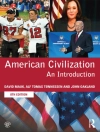Between 1921 and 1965 Irish and Scottish migrants continued to seek new homes abroad. Using the personal accounts of these migrants from letters, interviews, questionnaires, and shipboard journals, together with more traditional documentary sources such as immigration files and maritime records, this book examines the experience of migration and settlement in North America and Australasia.
Through a close reading of personal testimonies the author highlights the assorted similarities and differences between the Irish and Scots. Subtle differences rather than yawning cultural gaps are apparent; similarities in attitude and expectation are more common than divergent or unique experiences. The key revelation of the work is that, despite a number of peculiarities characterising their individual and collective experiences of migration, both the Irish and Scots were relatively successful migrants in the period under consideration.
Using interviews, both spoken and written, and tackling issues of why and how versions of the past are represented and what they mean, this fascinating study considers individual and collective memory and the use of personal testimonies as historical evidence: their uniqueness and typicality. Furthermore, in using personal narratives the book portrays individual migration experiences which are often hidden in studies based on statistical analysis.
表中的内容
Introduction: Methods, approaches, sources
1.Historiography and context
2.‘I’ll go and find some sunshine’: Considering going
3.‘A tearful goodbye’: Planning to move
4.‘Nothing but water’: Getting there
5.‘The land of opportunity’: Ellis Island and New York
6.‘It just isn’t home’: Entering the British World
7.‘A crony of my own type’: Personal and group networks
8.‘Jigs and reels and hornpipes’: Identity, culture, and belonging
9.‘The savage loves his native shore’: Going home
Conclusion
Appendices
Bibliography
关于作者
Angela Mc Carthy is RCUK Academic Fellow/Lecturer in History (Diaspora) at the University of Hull












